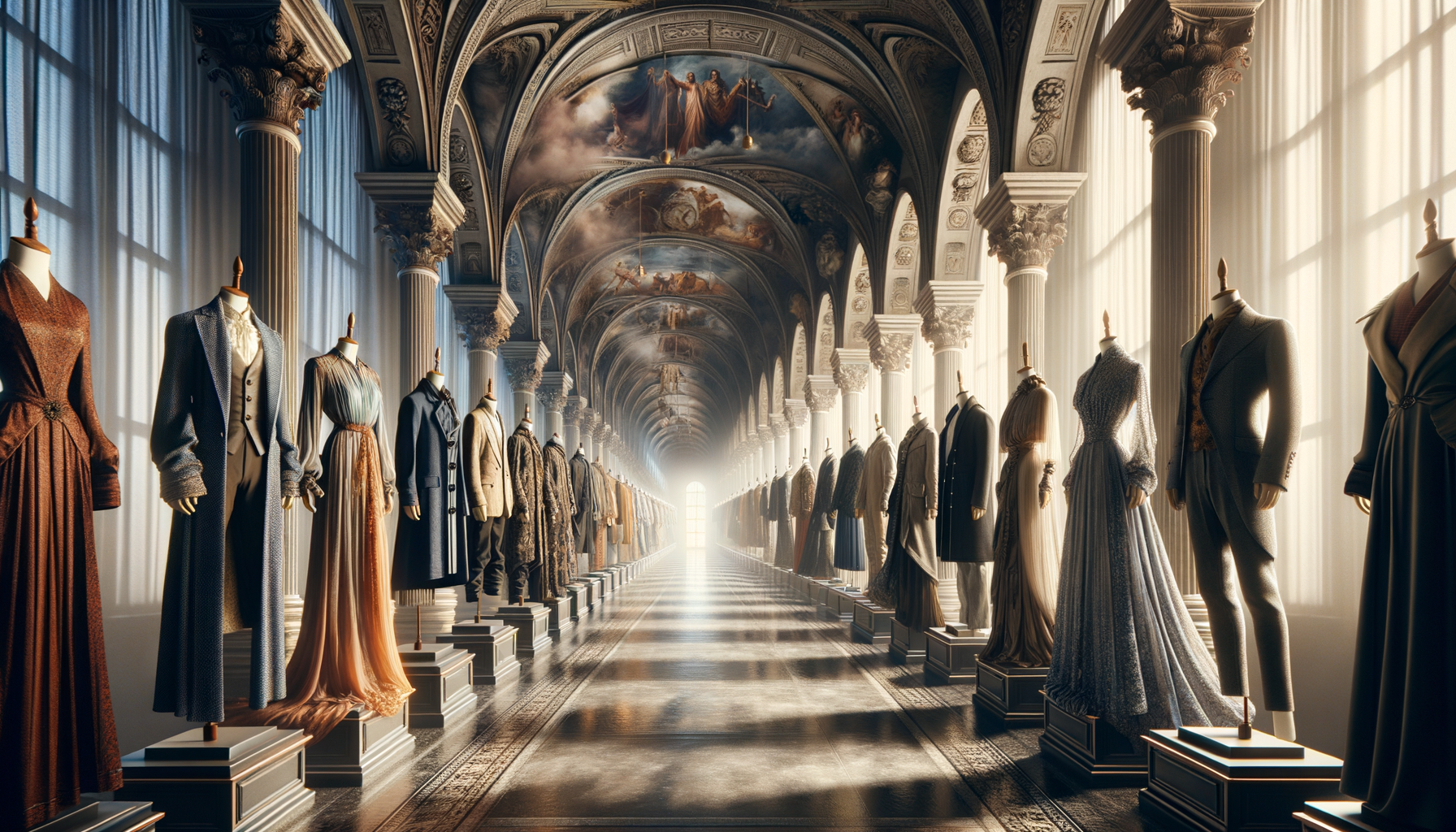The Origins of Attire: From Necessity to Expression
The history of clothing is as ancient as human civilization itself. Initially, garments were designed out of necessity, primarily to protect against the elements. Early humans used animal skins and plant materials to create rudimentary coverings. However, as societies evolved, so did the purpose and complexity of attire.
In ancient civilizations like Egypt, Greece, and Rome, clothing began to symbolize social status and identity. The Egyptians are well-known for their linen garments, which were not only practical for the hot climate but also a marker of wealth and status. Similarly, the Greeks and Romans introduced draped garments that were both functional and expressive of one’s social standing.
As time progressed, clothing became a canvas for cultural expression. The Middle Ages saw the rise of elaborate costumes and the use of luxurious fabrics like silk and velvet, often adorned with intricate embroidery. This shift marked a transition from clothing as mere protection to clothing as a form of personal and cultural expression.
Renaissance and Baroque: The Flourishing of Fashion
The Renaissance period was a turning point in the history of fashion. It was a time of rebirth in arts and culture, and clothing was no exception. Garments became more sophisticated, with an emphasis on tailoring and silhouette. The use of rich fabrics, elaborate patterns, and detailed ornamentation became prevalent.
During the Baroque era, fashion became even more extravagant. The use of lace, brocade, and embroidery reached new heights. Clothing was not just about covering the body but creating a visual spectacle. This period also saw the introduction of fashion trends and the beginnings of what we now recognize as the fashion industry.
Fashion during these periods was heavily influenced by the nobility and royal courts, dictating styles that would trickle down to the masses. It was also a time when fashion began to cross borders, with styles from different countries influencing each other, leading to a more interconnected fashion world.
Industrial Revolution: The Democratization of Fashion
The Industrial Revolution brought about significant changes in the production and consumption of clothing. The invention of the sewing machine and the rise of factories made clothing more accessible and affordable to the general public. This democratization of fashion meant that more people could participate in fashion trends than ever before.
Mass production led to the standardization of sizes and the rise of ready-to-wear clothing. This era also saw the birth of department stores and catalog shopping, making fashion more accessible to the masses. The 19th century was a time of rapid change, and fashion reflected the social and economic shifts of the period.
Moreover, fashion became a way for individuals to express their political and social views. The suffragette movement, for example, used fashion as a form of protest, with women adopting more practical and less restrictive clothing as a statement against traditional gender roles.
20th Century: Fashion as a Reflection of Society
The 20th century was a dynamic period for fashion, marked by rapid changes and diverse styles. From the flapper dresses of the 1920s to the rebellious punk fashion of the 1970s, clothing became a powerful medium for self-expression and social commentary.
The mid-century saw the emergence of iconic designers who revolutionized fashion with their innovative designs. The concept of haute couture flourished, and fashion capitals like Paris, Milan, and New York became the epicenters of style and creativity.
Fashion in the 20th century was also influenced by major historical events. The two World Wars, for example, had a profound impact on clothing, leading to more practical and utilitarian designs. The post-war era, however, saw a return to glamour and luxury, with fashion becoming more diverse and inclusive.
The Modern Era: Sustainability and Technological Innovation
In the 21st century, fashion has become a global phenomenon, with trends spreading rapidly across the world. The rise of fast fashion has made clothing more affordable but has also raised concerns about sustainability and ethical production.
The fashion industry is now at a crossroads, with an increasing focus on sustainable practices and eco-friendly materials. Designers are exploring innovative ways to reduce waste and create environmentally conscious collections.
Technology has also played a significant role in modern fashion. From digital fashion shows to virtual fitting rooms, technology is transforming how we experience and interact with clothing. The future of fashion is likely to be shaped by these technological advancements, leading to new possibilities in design and consumer engagement.
Conclusion: The Ever-Evolving World of Fashion
As we have journeyed through the history of attire, it is evident that fashion is much more than just clothing. It is a reflection of cultural, social, and technological changes. Fashion continues to evolve, adapting to the needs and desires of society while also challenging norms and pushing boundaries.
For fashion enthusiasts and historians alike, understanding the past is key to appreciating the present and anticipating the future. The world of fashion is rich and diverse, offering endless opportunities for exploration and expression.








